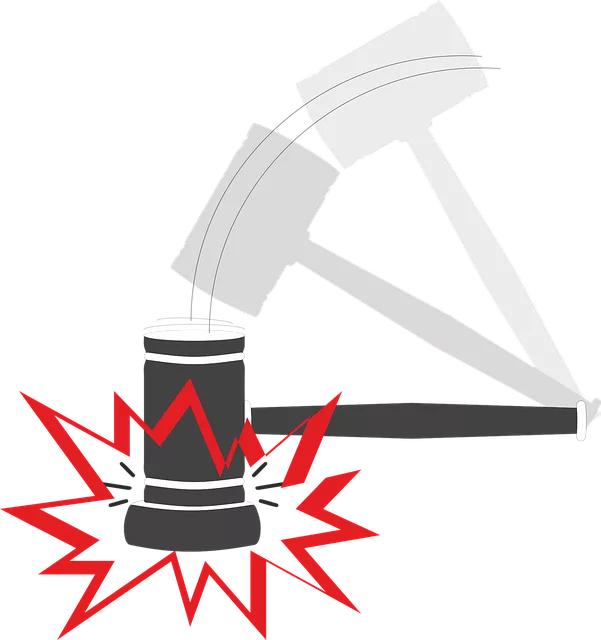Category: Highlands Ranch Colorado Workers’ Compensation
Highlands Ranch Colorado Workers’ Compensation: A Comprehensive Guide
Introduction
Welcome to an in-depth exploration of a critical aspect of labor and industry—Highlands Ranch Colorado Workers’ Compensation. This article aims to unravel the complexities of this legal framework, its historical evolution, and its profound impact on workers, businesses, and the economy in Highlands Ranch, Colorado, and beyond. By delving into various facets, we will uncover how this system has shaped workplace safety, rights, and responsibilities, influencing international practices and technological innovations.
Understanding Highlands Ranch Colorado Workers’ Compensation: A Foundation
Definition: Highlands Ranch Colorado Workers’ Compensation, often referred to as workers’ comp, is a form of insurance that provides financial protection to employees who sustain injuries or contract occupational illnesses while on the job. It serves as a safety net, ensuring workers receive medical care, wage replacement, and rehabilitation services.
Core Components:
- Coverage: All employers in Colorado with one or more employees are required to secure workers’ compensation insurance. This includes various sectors, from construction to healthcare.
- Benefits: Injured workers can access medical treatment, physical therapy, and vocational rehabilitation. They also receive partial wage replacement during their recovery period.
- Claims Process: Employees file claims with the Colorado Division of Workers’ Compensation (DWC), which investigates, mediates, and ensures compliance with the law.
- Insurance System: Employers purchase workers’ comp insurance from private insurers or the state fund, depending on risk factors.
Historical Context: The roots of workers’ compensation can be traced back to the late 19th century when industrial accidents and poor working conditions sparked labor movements. In 1907, Colorado became one of the first states to enact a comprehensive workers’ comp law, setting a precedent for other states and influencing international labor policies.
Significance: This system is vital for several reasons:
- Safety and Protection: It encourages employers to provide safe workplaces by holding them accountable for employee well-being.
- Fairness: Workers’ comp ensures that injured employees receive support without jeopardizing their financial stability.
- Prevention: The system promotes workplace safety culture through inspections, training, and reporting of incidents.
- Economic Stability: It minimizes the economic impact on families affected by job-related injuries or illnesses.
Global Impact and Trends
Highlands Ranch Colorado Workers’ Compensation has left a significant mark internationally, influencing global labor practices and standards. Here’s how:
| Region | Impact | Trends |
|---|---|---|
| North America | Strong workers’ comp systems are models for other regions, emphasizing employee rights and employer responsibility. | Increasing focus on mental health support, ergonomic guidelines to prevent repetitive strain injuries, and technology-driven claims processing. |
| Europe | Many European countries have adopted similar systems, with the EU’s Working Time Directive setting standards for worker protection. | Expanding coverage to gig economy workers, implementing digital platforms for claim submission, and harmonizing benefit structures across member states. |
| Asia Pacific | Countries like Japan and Australia have developed robust frameworks inspired by North American models. | Integration of technology for real-time data analysis, telemedicine for remote medical consultations, and AI-assisted claims assessment. |
| Global Trends | Rising costs of workers’ comp insurance have led to increased focus on risk management and preventive measures. | Telework and remote work policies have changed the dynamics, requiring adjustments in coverage and claim handling processes. |
Economic Considerations
The economic landscape is intrinsically linked to workers’ compensation, as it affects both businesses and the broader economy:
- Market Dynamics: Workers’ comp insurance premiums vary based on industry risks, claims history, and local regulations. This influences business operational costs and competitiveness.
- Investment Patterns: Businesses must allocate funds for workers’ comp coverage, impacting their investment strategies and profitability. Startups and small businesses may face challenges in securing adequate coverage due to higher risk profiles.
- Economic Stability: By providing income replacement and medical benefits, workers’ compensation contributes to economic stability during periods of illness or injury. It reduces the financial strain on affected households.
- Cost-Benefit Analysis: Employers consider the cost of insurance against potential claims when making business decisions, such as expanding operations or hiring additional staff.
Technological Advancements
Technology has revolutionized workers’ compensation, enhancing efficiency, accuracy, and accessibility:
- Digital Claims Management: Online platforms enable employees to file claims, submit medical records, and track progress digitally, streamlining the process.
- Telemedicine: Remote consultations with healthcare providers reduce travel time and costs for both workers and employers, especially in rural areas.
- AI and Machine Learning: These technologies assist in claims assessment, identifying fraudulent activities, and predicting injury risks, leading to faster settlements and improved risk management.
- Wearable Devices: Employee monitoring through wearable tech can provide real-time data on workplace safety, helping employers identify hazards and reduce incidents.
- Blockchain: This technology offers secure, transparent record-keeping for claims history, ensuring data integrity and streamlining verification processes.
Case Study: Implementation in Action
To illustrate the practical impact, let’s consider a hypothetical construction site in Highlands Ranch:
Scenario: A worker, Sarah, falls from a ladder while painting a high-rise building, sustaining a broken leg and wrist.
Steps:
- Immediate Care: On-site first aid is administered, and Sarah is transported to the nearest hospital for treatment.
- Claim Filing: Sarah’s employer assists her in filing a workers’ comp claim with the DWC within the required time frame.
- Medical Assessment: The DWC coordinates with healthcare providers to ensure Sarah receives necessary treatments and rehabilitation services.
- Income Replacement: During Sarah’s recovery, she receives partial wage replacement, ensuring financial stability.
- Return to Work: Upon healing, Sarah returns to work with accommodations to prevent further injury. Her employer provides training on new safety protocols.
Challenges and Future Outlook
Despite its benefits, the workers’ compensation system faces challenges:
- Rising Costs: Claim densities and legal complexities contribute to higher insurance premiums, impacting businesses, especially small ones.
- Claim Fraud: Detecting and preventing fraudulent claims remains a challenge, requiring advanced technology and strict verification processes.
- Healthcare Integration: Seamless integration between workers’ comp providers and healthcare systems is essential for efficient claim management.
- Remote Work: The rise of remote work presents new challenges, as employers must ensure coverage and safety for off-site employees.
Looking ahead, the future of workers’ compensation may include:
- Personalized Risk Profiles: AI-driven assessments can create tailored risk profiles for individuals, ensuring fairer premiums.
- Real-Time Data Analytics: Advanced analytics can predict workplace hazards and identify high-risk industries, enabling proactive measures.
- Digital Identities: Secure digital identities can streamline claim processes and verify employee eligibility.
- Global Harmonization: Standardizing benefit structures and claim handling procedures across borders could enhance accessibility for mobile workers.
Conclusion
Highlands Ranch Colorado Workers’ Compensation is a cornerstone of the region’s labor ecosystem, ensuring fairness, safety, and economic stability. As technology advances and global practices evolve, this system must adapt to meet emerging challenges. By embracing innovation while maintaining its core principles, workers’ compensation can continue to serve as a powerful tool for protecting employees and fostering thriving businesses in Highlands Ranch and beyond.
Expert Legal Aid for Highlands Ranch Workers’ Comp Misdemeanors: Save Now!

Looking for peace of mind at work in vibrant Highlands Ranch, Colorado? Our comprehensive Workers�…….
Unlock Hassle-Free Colorado Property Deals in Highlands Ranch – Free Consultation & Workers’ Comp Protection

Looking to buy or sell in the bustling Highlands Ranch, Colorado market? Our specialized Real Estate…….
Free Legal Aid in Highlands Ranch: End Intimate Partner Abuse, Claim Workers’ Comp.

Are you a resident of Highlands Ranch, Colorado, seeking justice and financial stability after domes…….
Fast Dispute Resolution: Save Time & Cash on Highlands Ranch Tenant Issues

Tired of costly and time-consuming tenant disputes in vibrant Highlands Ranch, Colorado? Our special…….
Save Thousands with Workers’ Comp Debt Restructuring in Highlands Ranch, CO – Free Consultation!
Free Consultation: Maximize Your Compensation with Top Workers’ Comp Lawyer in Highlands Ranch, CO
Launch Your Dream Business in Highlands Ranch: Save on Workers’ Comp with Top Legal Experts
Hassle-Free Divorces in Highlands Ranch, CO: Save Time & Money with Expert Workers’ Comp Mediation

Tired of the emotional turmoil and financial strain of traditional divorce in Highlands Ranch, Color…….




